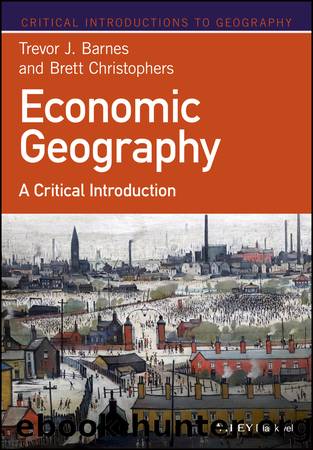Economic Geography by Trevor Barnes & Brett Christophers

Author:Trevor Barnes & Brett Christophers [Barnes, Trevor & Christophers, Brett]
Language: eng
Format: epub
ISBN: 9781118874288
Published: 2018-01-23T00:00:00+00:00
7.2 The Hidden Life of a Discipline
If anyone represented pure rationality, a brain in a vat, it was Sir Isaac Newton (1643–1727), the English scientist. Newton famously could hold an analytical problem in his mind for days, turning it over, trying one logical line of attack, then another, until eventually it succumbed (Gleick 2003). Hence, he was able to invent calculus, the wave theory of light, and the gravity equation. Seemingly, it was all done by sweated brain power. By doggedly following rationality, and only rationality, Truth was laid bare.
It was not that simple, however. Newton’s rationality was at best mixed. His achievements were made possible precisely because of his interactions with a larger outside society, with other early scientists, and with a world of things. Newton made astounding scientific breakthroughs. But the majority of his time spent in his two‐storied wooden “Elaboratory,” as he called it, at the bottom of his Fellow’s garden at Trinity College, Cambridge, was not concerned with science. Instead, it involved testing witchcraft recipes to transmute base metals into gold (alchemy), and engaging in frighteningly difficult calculations to reveal God’s secrets, which Newton believed were written in arithmetical code within the bible (“Biblical numerology”). In fact, posthumous forensic evidence suggests Newton’s later sometimes tenuous grip on life – even his otherwise ardent admirer John Maynard Keynes (1951, p.321) called him “slightly ‘gaga” – was a result of mercury poisoning contracted during those alchemic experiments (Gleick 2003, p.99). If anyone was confronted by the vagaries of a messy life, unpredictable materiality, complex interests, and irrationalities, it was Newton. Furthermore, he was never a lone, detached scientist, but always part of a wider scientific community. One of the earliest elected members of the Royal Society (in 1672), the first learned society for science in Britain, Newton would regularly meet in Gresham College, London, with other scientists, debating them, reading their papers, and witnessing their experiments. That community, though, was shot through with power differentials, rivalry, and jealously. Newton, for example, wrote much of his work in secret code so afraid was he that his ideas would be stolen. Even when Newton was seemingly gracious, recognizing the role of that larger scientific community – he famously said, “If I have seen further it is by standing on the shoulders of Giants” (quoted by Gleick 2003, p.98)1 – he still used the occasion to put down one of his rivals, Robert Hook, a man of short stature, and no “Giant.”
Over the past 50 years or so there has been a revolutionary re‐conception of how science operates, leaking into the social sciences, including economic geography. It is an anti‐rationalist interpretation. It involves moving away from framing scientists as heroic, isolated, faceless rational automatons, computers on legs, instead recognizing them as sentient, fallible, ordinary human beings, embedded within larger power‐permeated social structures and institutions of a given time and place, with specific rules, mandates, and interests. Thomas Kuhn’s (1970) The Structure of Scientific Revolutions was one key to this anti‐rationalist reconceptualization, and was later elaborated by work in science studies.
Download
This site does not store any files on its server. We only index and link to content provided by other sites. Please contact the content providers to delete copyright contents if any and email us, we'll remove relevant links or contents immediately.
International Integration of the Brazilian Economy by Elias C. Grivoyannis(97869)
The Radium Girls by Kate Moore(11964)
Turbulence by E. J. Noyes(7974)
Nudge - Improving Decisions about Health, Wealth, and Happiness by Thaler Sunstein(7652)
The Black Swan by Nassim Nicholas Taleb(7049)
Rich Dad Poor Dad by Robert T. Kiyosaki(6500)
Pioneering Portfolio Management by David F. Swensen(6252)
Man-made Catastrophes and Risk Information Concealment by Dmitry Chernov & Didier Sornette(5948)
Zero to One by Peter Thiel(5721)
Secrecy World by Jake Bernstein(4696)
Millionaire: The Philanderer, Gambler, and Duelist Who Invented Modern Finance by Janet Gleeson(4414)
The Age of Surveillance Capitalism by Shoshana Zuboff(4238)
Skin in the Game by Nassim Nicholas Taleb(4198)
Bullshit Jobs by David Graeber(4130)
The Money Culture by Michael Lewis(4122)
Skin in the Game: Hidden Asymmetries in Daily Life by Nassim Nicholas Taleb(3959)
The Dhandho Investor by Mohnish Pabrai(3720)
The Wisdom of Finance by Mihir Desai(3690)
Blockchain Basics by Daniel Drescher(3531)
